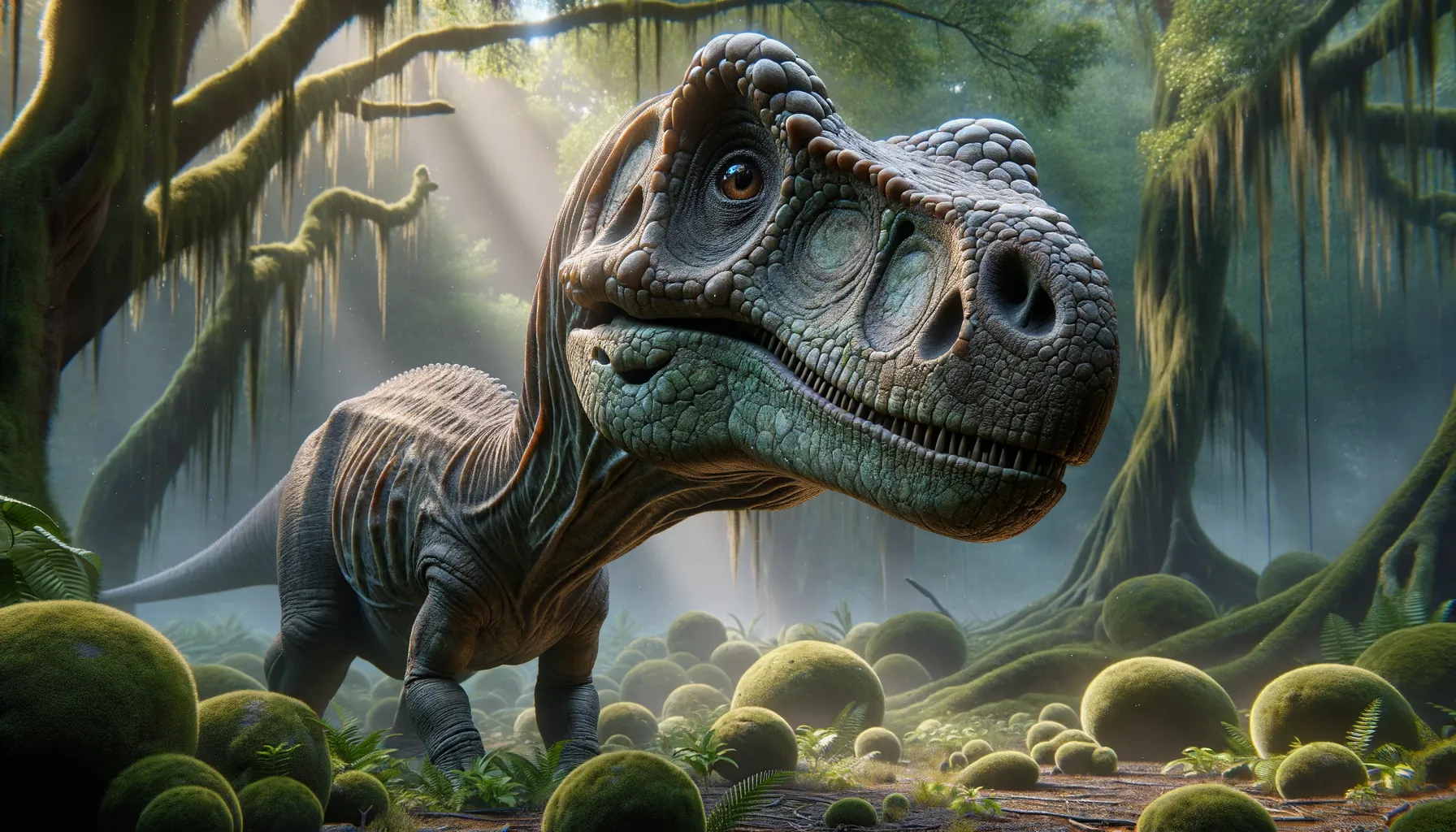
Ornatotholus
The dome-headed enigma of the Cretaceous!
Period
Cretaceous
Length
About 2 meters in length.
Height
Roughly 1 meter tall.
Weight
Approximately 10 to 20 kilograms.
Ornatotholus was a small, dome-headed dinosaur known for its distinct skull, which had a rounded shape. It lived during the late Cretaceous period in what is now North America. This dinosaur likely fed on plants and utilized its head for defense or social interactions. Though not much is known about its full lifestyle, its unique skull remains a point of interest for paleontologists.
Diet
Ornatotholus was likely a herbivore, feeding on a variety of plant material available in its environment. It may have consumed low-lying plants and leaves, requiring adaptations in jaw structure for efficient feeding.
Hunting
As a herbivore, Ornatotholus did not hunt. It instead foraged for food among the dense vegetation, using its surroundings to fuel its daily activities.
Environmental challenges
Ornatotholus faced various challenges, including predators that roamed its habitat. Finding enough food in forested environments during the Cretaceous would have been crucial for its survival. Additionally, climate changes might have affected its living conditions, forcing it to adapt rapidly. Competition with other herbivores for scarce resources would have added to its daily challenges.
Speed
Likely slow, due to its small size and body build.
Lifespan
Estimated at around 10 to 20 years.
First discovery
Discovered in 1975 in Alberta, Canada.
Fun Facts
- Ornatotholus was a small dinosaur, estimated to be around 1.5 meters long, making it roughly the size of a large dog.
- It lived during the Late Cretaceous period, approximately 75 million years ago.
- The name 'Ornatotholus' means 'decorated dome', referring to the unusual shape and ornamentation of its skull.
- Ornatotholus is considered to be a type of pachycephalosaur, a group of dinosaurs known for their thick, domed skulls.
- Fossils of Ornatotholus have been primarily found in what is now Alberta, Canada.
- There is some debate among paleontologists about whether Ornatotholus is a distinct species or if its fossils belong to juvenile forms of other pachycephalosaurs.
- Ornatotholus may have used its thick skull for head-butting contests, although this is still a topic of scientific discussion.
Growth and Development
The growth of Ornatotholus would have involved a gradual increase in size, with the dome on its head developing more prominently over time. Young individuals likely relied on staying close to family groups for protection. Fast growth rates might have been necessary to quickly reach a size capable of better fending off predators.
Habitat
Ornatotholus lived in forested regions with plenty of plant material available for sustenance. These areas offered shelter and the resources needed for their daily activities. The environment was fairly dynamic, with seasons potentially impacting the availability of resources.
Interaction with other species
Ornatotholus probably interacted with a variety of other dinosaurs, including competing herbivores and predatory species. Its small size would have made it vulnerable, necessitating the use of social defense mechanisms or effective evasion strategies. These interactions shaped its daily life and influenced its ecological niche.
Natural lifespan
Its natural lifespan was likely around 10 to 20 years.
Reproduction
Ornatotholus reproduced by laying eggs, likely in nests constructed in safe, secluded areas. Parental care might have been minimal, as is common with many reptiles, but young would have remained vulnerable to predation. Breeding behaviors might have included displays or competition among males for access to females.
Social behaviour
Social behavior of Ornatotholus might have involved small group living for protection. The dome on its head may have played a role in social interactions, possibly as a visual signal or for head-butting competitions among males. Social bonds would have been essential for survival in their environment.
Fossil locations
Fossils of Ornatotholus have been primarily found in Alberta, Canada, though some remains have been described elsewhere in North America. Its fossilized remains include parts of its distinctive skull, offering crucial insights into its physical appearance. These fossils help paleontologists understand its ecological role and behavioral adaptations.
